How to draw
When i started drawing first i searched internet for guidance. Naturally i found many places, websites, schools, courses and books on the subject. But unlike any other topic i was ever interested in, only in this craft have i seen so many (seemingly) contradicting advice:

And i, as beginner with no experience, had to decide who was telling the truth and who was just a crab or an uninformed internet expert. So i made a list of books and decided to go through them one by one. Surely at least one of them contains the exercises or knowledge needed to get good!
TLDR
- OBSERVATION is the most important fundamental you have to learn first!
- You get good only by drawing A LOT. Make drawing a daily habit!
- Shy away from drawing purely from imagination as beginner; use references!
- Pick one course or book and finish it. Don't switch them without a good reason!
- Find an art community where people aren't afraid to give you negative feedback.
- Broadcasted radio is good background music for drawing.
- Learning from great teachers might be easier and faster than from great artists.
I could have written way more, cite my favorite book or artist, but honestly, for every advice, you will be able to find counter-advice from a successful or well-acclaimed artists who will claim the direct opposite. Observation and drawing a lot. That is all there is to it. Everything else is just a bonus that can hinder or speed up your progress.
Bellow is the list of books i completed. They are sorted chronologically as i went through them. I have read each book from start to finish, and you can easily tell if i did all the exercises + copied the drawings or if i just flew through it simply by checking the gallery.
How to draw accurately what you see. Many beginners underestimate the importance of good observation skills. Dont be one of them. Without good eye you will never evolve as an artist or illustrator. These books are the stepping stone, the foundation upon you will build your art career no matter which subject, medium or style you choose.
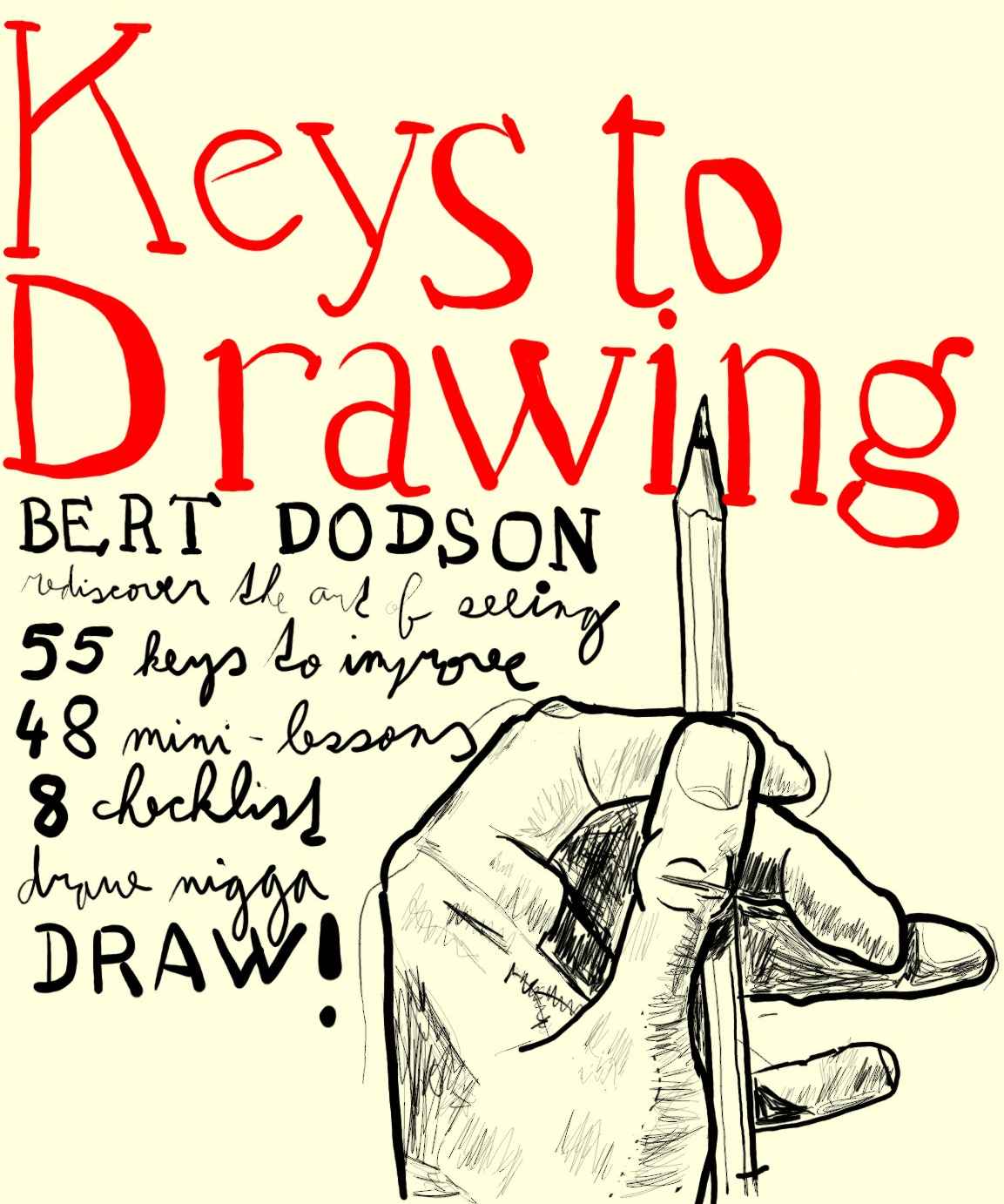 FXjDiQp54qp_QmKp9ueRoh7K9F6TFT9QQWHvJYPCSTo
FXjDiQp54qp_QmKp9ueRoh7K9F6TFT9QQWHvJYPCSTo
- Bert Dodson: Keys to Drawing, 1985



- Observation, intuition, fun.
- Pencil and eraser.
- 69 studies, 3 months
- Draw what you see even if it feels wrong.
- 9/10 easily the best book for beginner. The only drawback is a somewhat steep learning curve at the start. The book covers a broad range of drawing techniques while maintaining a steady skill curve. You will mostly draw from real life or references and learn about various drawing concepts like perspective, sighting, composition, rendering, shadows or even from where you can gain inspiration. This book's power level is very high and scope very broad. Dont underestimate it!
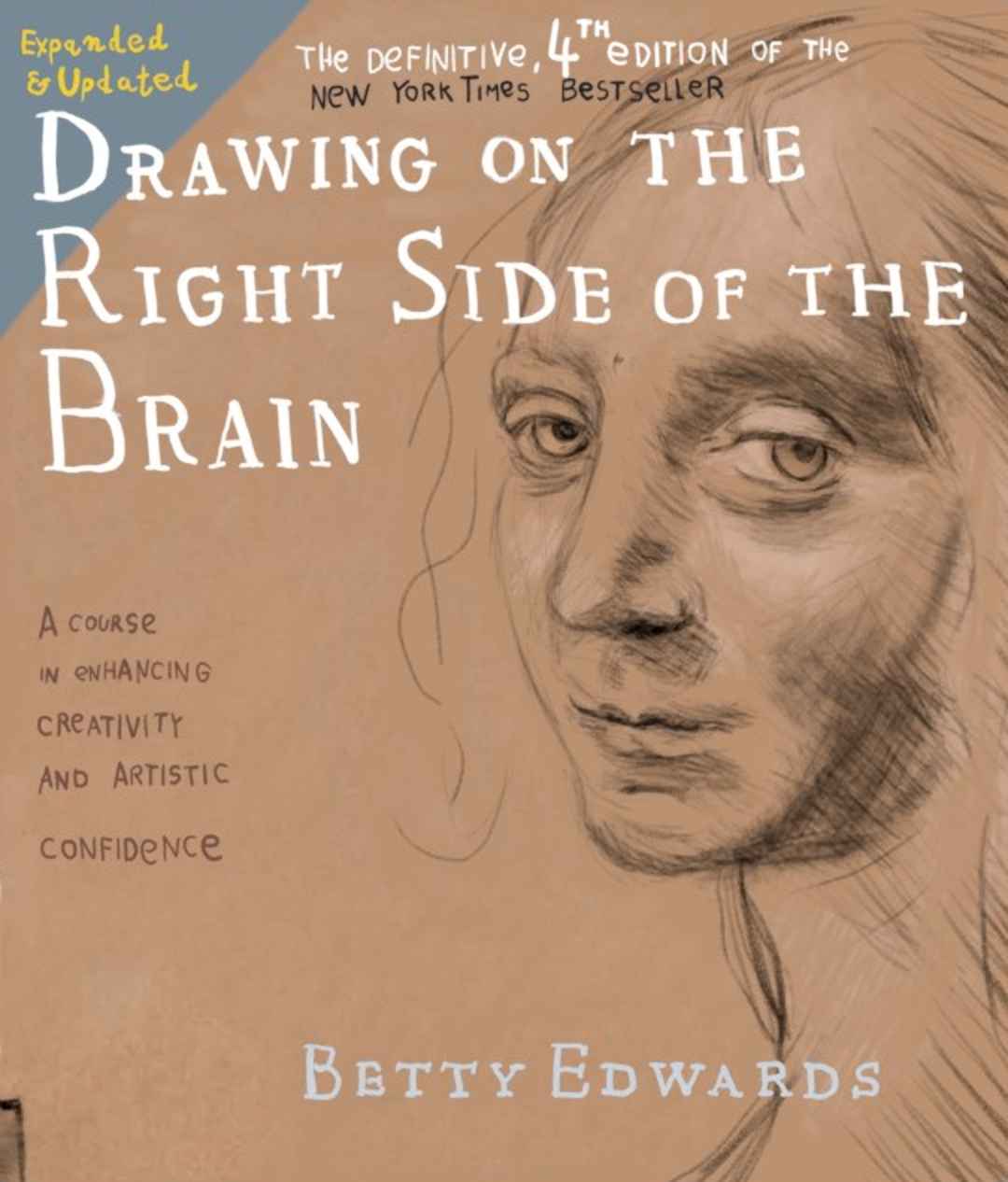 -yVFtCTWwrt4AoIO0ZX4aoTR6s-AcK81aqjx1oK_gCs
-yVFtCTWwrt4AoIO0ZX4aoTR6s-AcK81aqjx1oK_gCs
- Betty Edwards:
Drawing on the right side of the Brain, 1979



- Observation, strict instructions.
- Pencil, eraser, charcoal, viewfinder.
- 14 studies, 3 weeks
- Trick your left brain hemisphere into dropping out of the task.
- 6/10 suitable for people persuaded they don't have a talent for drawing. Elementary book covering the minimum you need to know to draw correctly from observation. Very wordy. If you won't fall asleep while reading it, you WILL LEARN how to draw! This book has undeniable results. As a bonus, you will read about the failing USA education system and your own brain.
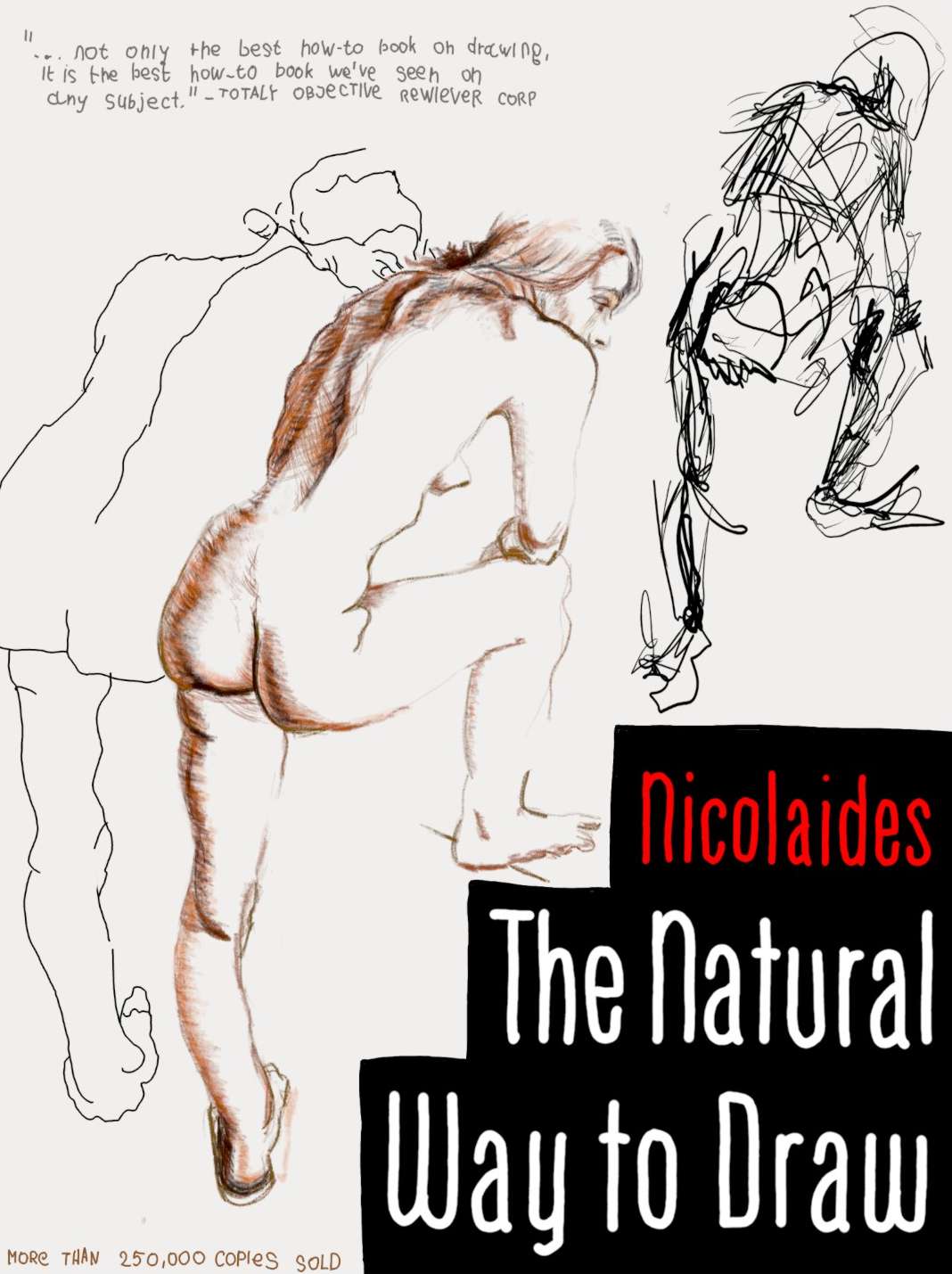 MiHnEgHr3wQ_738ysWSwQ6piEXQYGxArg020Kb_grcw
MiHnEgHr3wQ_738ysWSwQ6piEXQYGxArg020Kb_grcw
- Kimon Nicolaïdes: The Natural Way to Draw, 1941



- Gesture, observation, intuition, grind.
- Pencil, ink, charcoal, watercolors, oil.
- 93 studies, 4 months
- Draw thousands of gestures and then draw more of them.
- 5/10 controversial experience imitating university art course. The book explicitly states you won't learn anything from it unless you follow through with the prescribed exercises and grind. I kid you not i improved just by the gesture grind. Around ~3000th gesture, it finally dawned on me. However, i cannot recommend this book to anyone unless they struggle with STIFF figures. Whatever this book teaches, it feels like you are doing it in the most inefficient way possible. But that could simply be just me. Anatomy, figure proportions, drapery, feeling the form. The book contains a lot of very interesting revelations. But the price you will pay will be MANY days of grinding gestures.
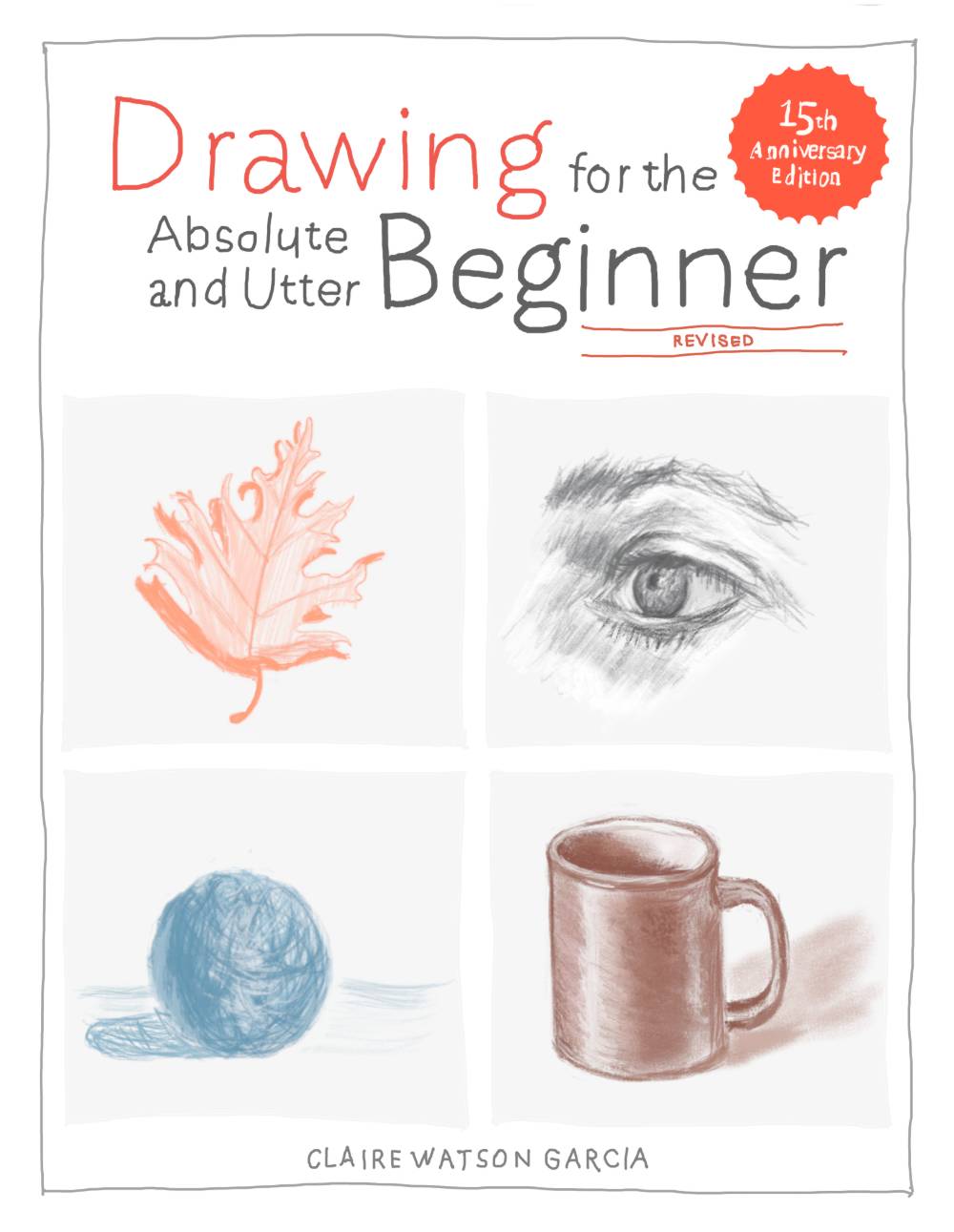 DA6iwr0kmKJdwbrTV0aXVEEIy5x5UopF6Zy7_camXq8
DA6iwr0kmKJdwbrTV0aXVEEIy5x5UopF6Zy7_camXq8
- Claire Watson Garcia:
Drawing for the Absolute and Utter Beginner, 2003



- Observation, strict instructions.
- Pencil, ink, charcoal, wash.
- 16 studies, 3 weeks
- Always be kind to your drawings and yourself.
- 7/10 short, detailed, straight to the point. Direct upgrade of book Drawing on the right side of the Brain. The strongest points of the book are VERY detailed instructions. The skill curve is very mild. Book even shows you common drawing errors and how to fix them. You will start drawing very simple household objects and you will finish with human head. You will also be introduced to new mediums and showed their strengths. Very nice book for beginners.
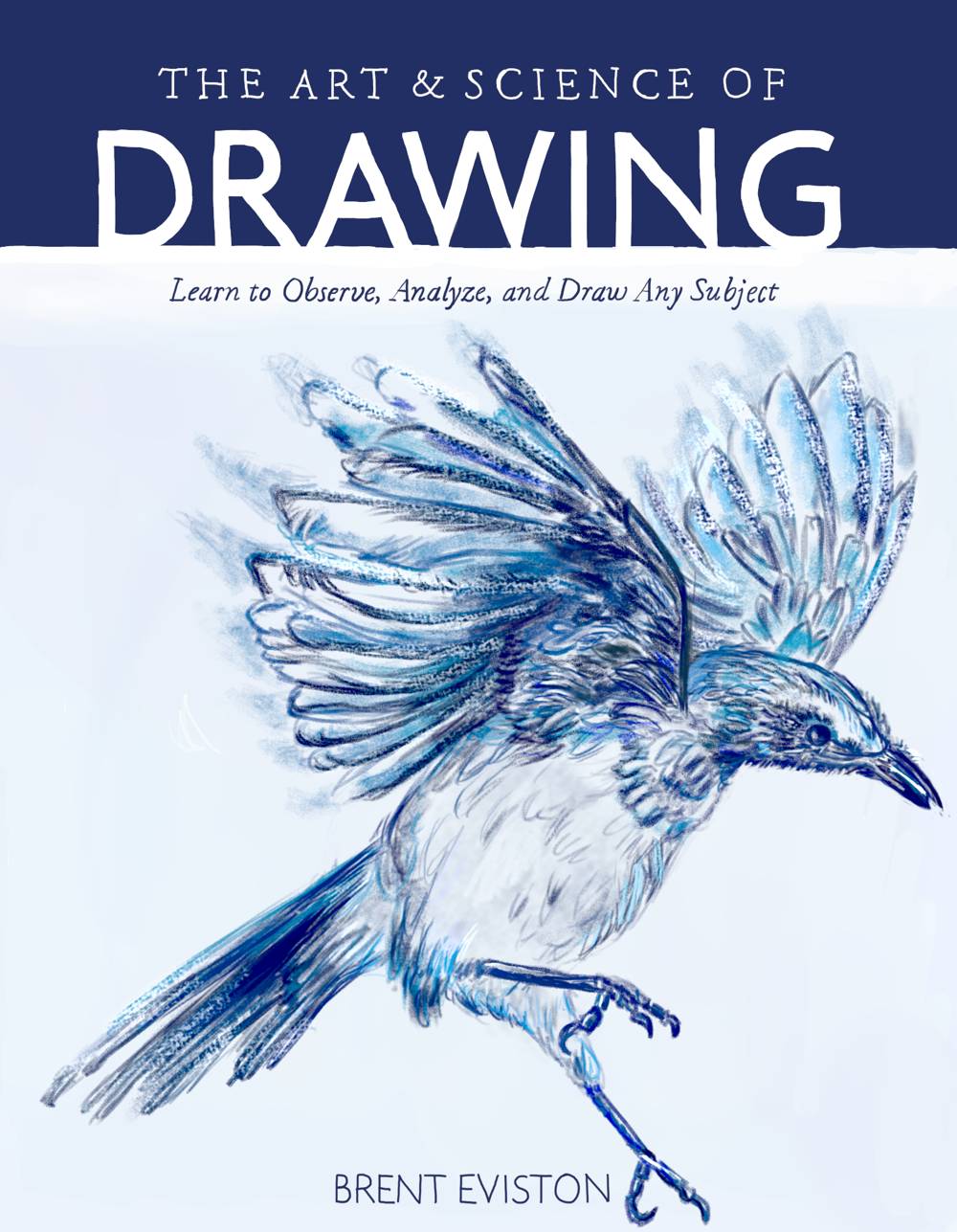 JWcbAHcioTHEC6RbQpUb0jRvjewTu0cJDUbLcyKB078
JWcbAHcioTHEC6RbQpUb0jRvjewTu0cJDUbLcyKB078
- Brent Eviston: The Art and Science of Drawing, 2021

- Construction, gesture, strict instructions.
- Pencil.
- 14 studies, 2 weeks
- Draw circle. Now sphere. And finally now draw apple from that sphere!
- 7/10 short, detailed, technical introduction to construction and the human figure. This book is VERY different from the others. It's as if you gave a mechanical engineer a task to produce a course on drawing. Instead of approaching the subject through observation, you are encouraged to use what you know (form, shape) about it. The book is very technical; it explains every single detail, from how to hold your pencil to how to make strokes. You start with drawing spheres and cubes, continue with fruits, and end up with a human figure. Very well written. Ideal for people who like geometry and hate unclear instructions.
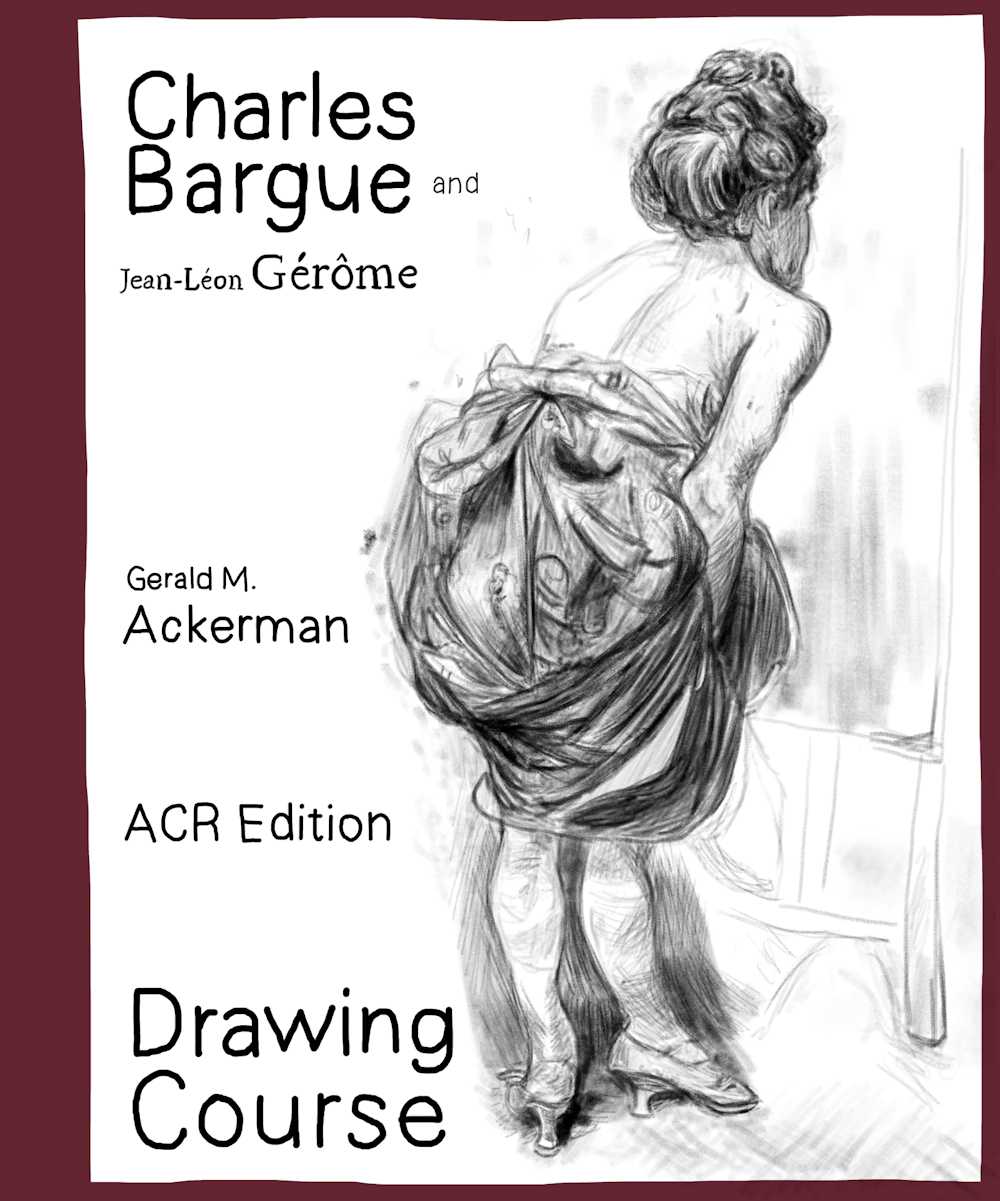 Ypba1AwlQ1tlpOQ-Q4gvlGoACeAaN_1lKzUc1VItEJk
Ypba1AwlQ1tlpOQ-Q4gvlGoACeAaN_1lKzUc1VItEJk
- Charles Bargue: Drawing Course, 1875


- Observation, grind.
- Charcoal or pencil.
- 30 studies, 5 weeks
- Copy these pictures as best as you can, reach respectable finish!
- 3/10 catalogue of Neoclassicism. In the 19th century, if you were a student of the arts in France, you would be copying from this in the same way Picasso or Gogh did. The course is designed to be utilized in an atelier under the supervision of a tutor. The stunning images of ancient Roman sculptures are the only thing I liked. The book is written in the style of a diploma project: excellent for earning a university degree, terrible as a source of knowledge to learn from. It begins by spitting out highly condensed theory and a few helpful suggestions before unleashing an endless stream of references. The skill curve is extremely erratic. This book is useless unless you're interested in history tidbits like why women were forbidden in posing for figure studies.
It is impossible to draw accurately without knowing basic physical laws which dictate how objects look like depending on the distance or angle we observe them. And while many beg books covered the principles briefly, only going deep into this topic shall lead into successful illustrations of reality.
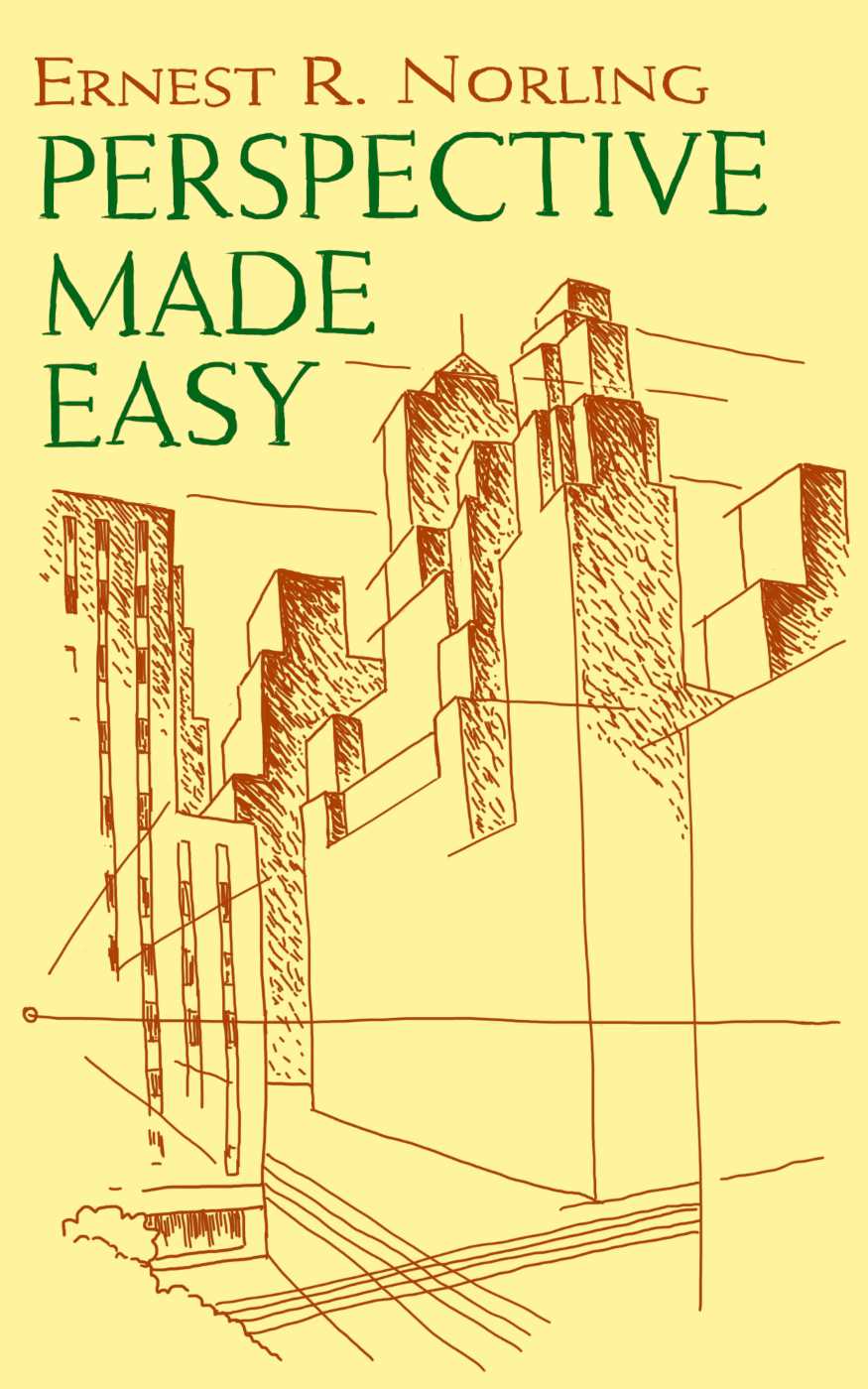 p_KUYB5voWBqqAittMh_oxWcRHkafieieS_acr1I8xo
p_KUYB5voWBqqAittMh_oxWcRHkafieieS_acr1I8xo
- Ernest Norling: Perspective Made Easy, 1939


- Perspective: 1P, 2P, observation.
- Pencil, ink.
- 18 studies
- If you can draw brick you can draw anything.
- 6/10 short sweet introduction to perspective. The book starts off very simple and stays that way to the end. It explains the strict perspective rules in a very informal, lighthearted manner using numerous visual examples. Although it doesnt explain 3P perspective, it provides you with a number of effective geometrical techniques to address typical drawing problems. You can read this book cover to cover in one sitting, and if you don't forget the guidelines it gives you, all of your subsequent drawings will be more accurate.
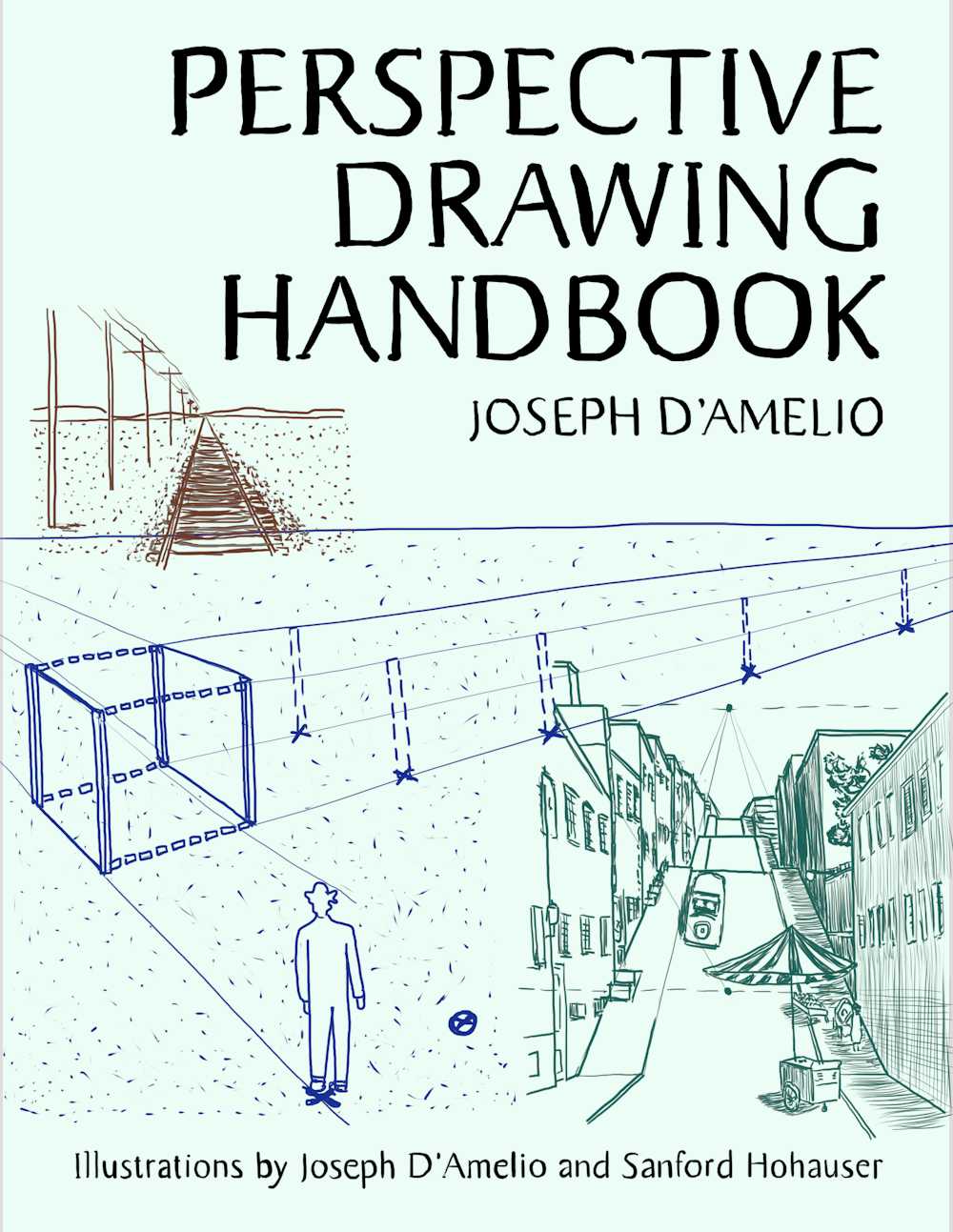 jv-jRtHT4_TTS7ZfmMMCzvmLDgmfA1ItPnW4SY2zwvI
jv-jRtHT4_TTS7ZfmMMCzvmLDgmfA1ItPnW4SY2zwvI
- Joseph D'Amelio: Perspective Drawing Handbook, 1964



- Perspective: 1P, 2P.
- Ink.
- Perspective is mandatory for all professionals involved with drawing.
- 11 studies
- 7/10 short dense crash course for perspective. The book provides clear explanations of all perspective rules and examples to illustrate them. It doesn't leave out any information, which at times can be a bit overwhelming. This book teaches readers how to find cast shadows, determine dimensions, and use 2P perspective. This book isnt direct upgrade of previous one, instead they do complement one another. The author's (architect) primary area of interest are buildings, human figures are secondary.
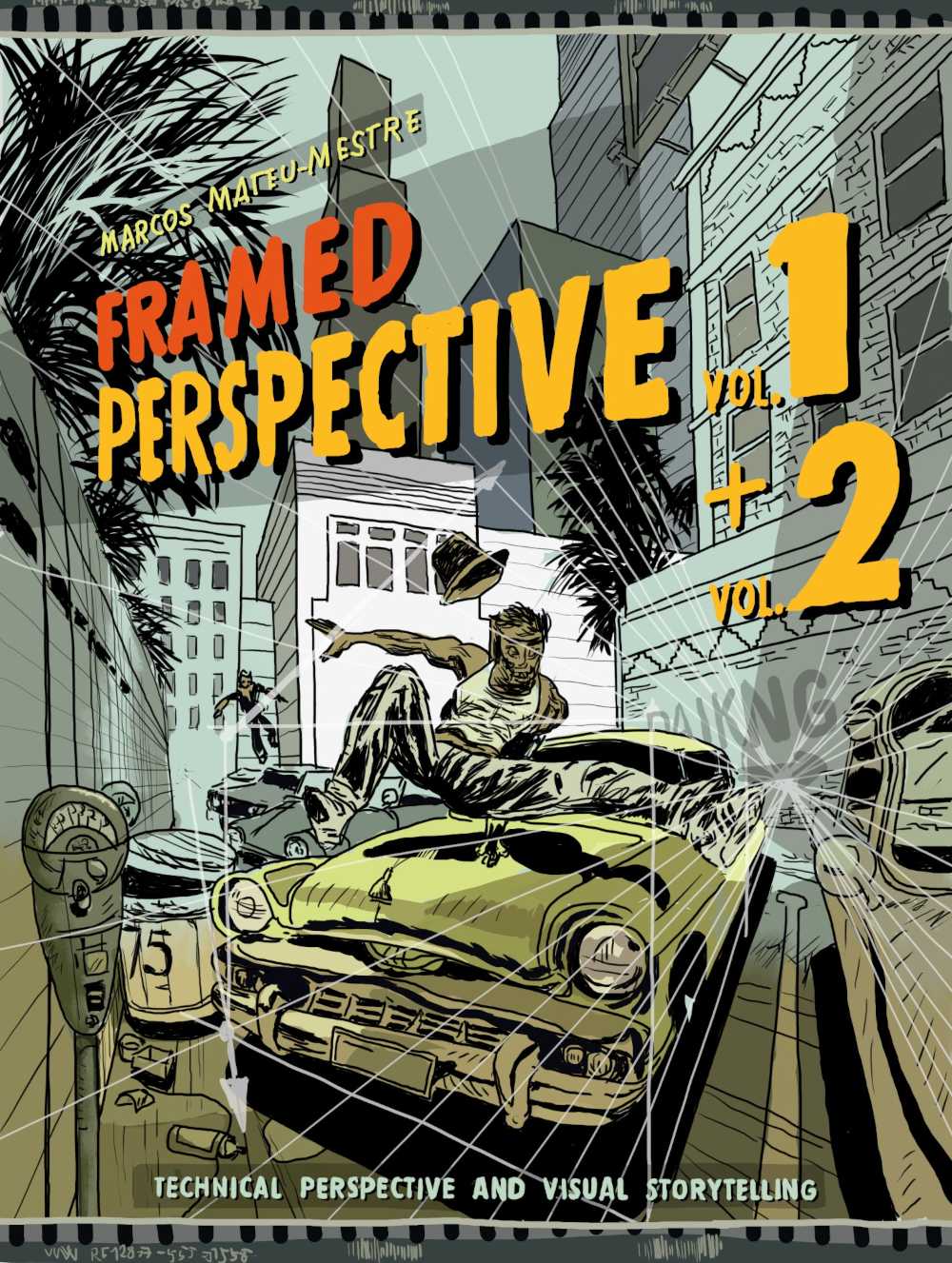 jrgbBC9-bSkvBJdfS8hRGrCYi1ft3yH9UeY-4UIJa9c
jrgbBC9-bSkvBJdfS8hRGrCYi1ft3yH9UeY-4UIJa9c
- Marcos Mateu-Mestre: Framed Perspective Vol. 1 Vol. 2, 2016

- Perspective: 1P, 2P, 3P, observation, strict instructions, design.
- Ink, ruler (for making grids).
- Perspective is powerful technical tool every artist should possess.
- 38 studies
- 10/10 long practical workbook for perspective. The book begins very slowly and casually with the basics of foreshortening plain geometrical shapes, but very quickly you will be drawing intricate scenarios involving architecture and people alike. Step by step lessons will show you how to construct beautiful scenes from basic sketch through perspective grid into fully rendered scene in ink. The author specializes in making comics and it shows: you will learn about figure drawing and design as a hidden bonus and you will get a glimpse into the mind and workflow of an illustrator.
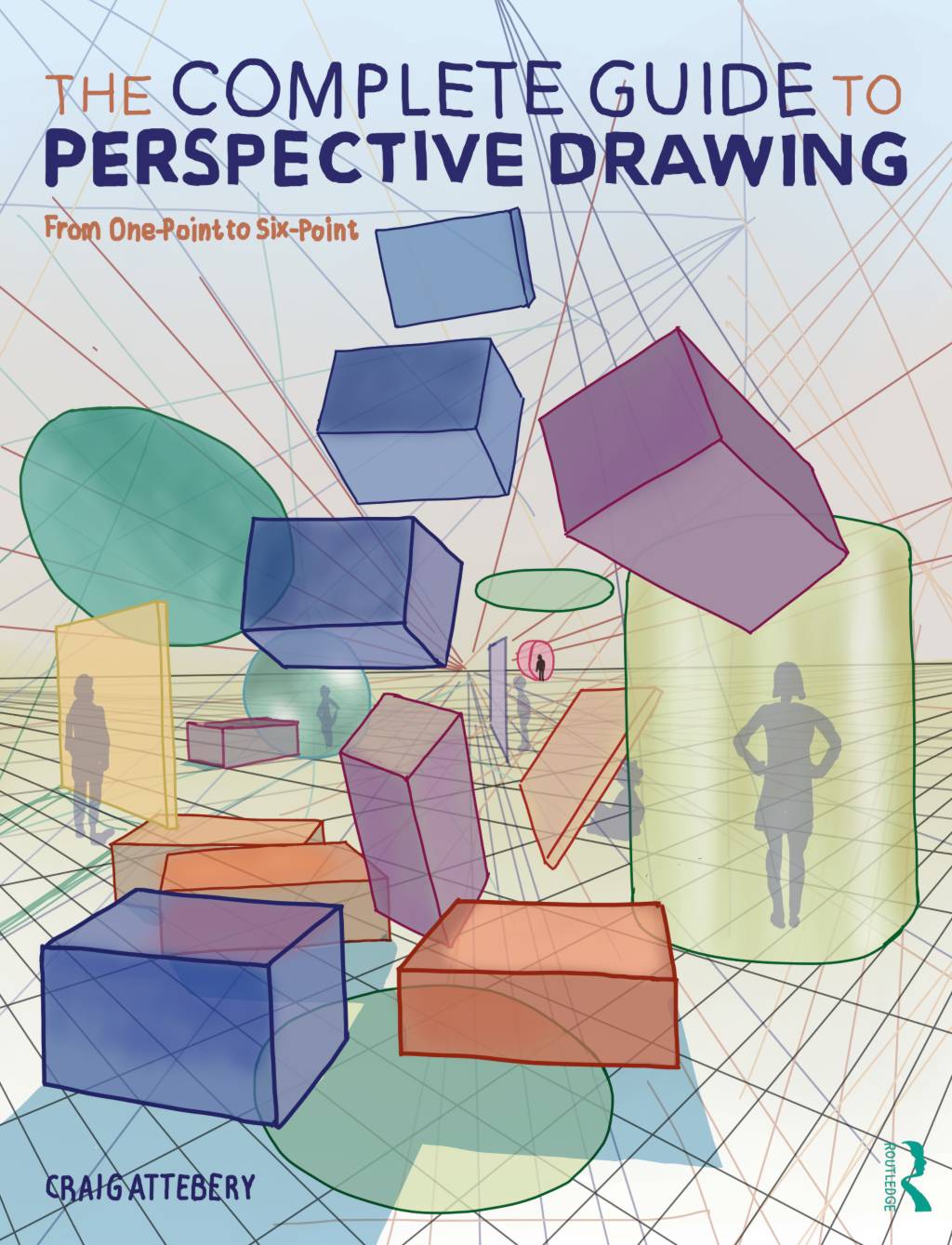 Bqg8gTEASofJyE5I0e2REXv8L8WE9jrw_JPGiwuxLtk
Bqg8gTEASofJyE5I0e2REXv8L8WE9jrw_JPGiwuxLtk
- Craig Attebery:
The Complete Guide to Perspective Drawing, 2018

- Perspective: 1P, 2P, 3P, 4P, 5P, 6P, geometry, strict instruction.
- Pencil, triangle ruler, compass.
- Line angled 45° from station point crosses horizon at measuring point.
- 21 studies, 3 weeks
- 3/10 supplementary read for the curious. This course answers the questions other books didn't even dare to ask. It utilizes geometry of isosceles triangles and measuring points to construct exact angles and dimensions of foreshortened objects in perspective. You will be taught how to construct perspective diagrams and how to use them to draw basic geometrical 3D shapes. There are additional materials online for students. Disappointingly, the book only very briefly explains P4,P5,P6 with zero practical showcases. If you're looking for something more than what other perspective books have to offer, this book is fantastic. It is bad on its own.
 -O7smuCNN-FBCkbPgJxU9JAlMSH1QcWWsjijV-mJ54k
-O7smuCNN-FBCkbPgJxU9JAlMSH1QcWWsjijV-mJ54k
- Dongho Kim: Space Drawing Perspective, 2020

김동호 저: 공간 드로잉 ,투시편 (Korea)
- Perspective: 1P, 2P, 3P, 5P, observation, casual.
- Ink.
- Remember these 3 rules and all will be easy.
- 12 studies, 2 weeks
- 7/10 comic book showing perspective by example. All of perspective theory is condensed in this manga-style book into only three fundamental concepts, which are repeatedly stated and illustrated with specific details. This might be the easiest material to learn from if you don't like reading. This book, in contrast to all others before it, genuinely teaches fish lens perspective (5P) in both theory and practice! Most scenes feature architecture, while the characters are stylized cartoon humans and furry animals. Very cute art design. The main drawback is the poor translation, which can occasionally be difficult to understand.
 m5gp1yHn8gMnzANU8q_GGcZvmF4FB9cI_uMZ-MgvIXg
m5gp1yHn8gMnzANU8q_GGcZvmF4FB9cI_uMZ-MgvIXg
- Scott Robertson: How to Draw, 2012


- Design, 2P perspective, construction, strict instructions.
- Pencil, ballpoint, light gray marker, triangle ruler, ellipse template.
- Reuse that perspective grid, always think in X,Y,Z axis!
- 24 studies, 1 month
- 5/10 designing step by step workbook. This book, despite its name, is only intended for experienced artists who are already proficient in perspective. It doesn't waste time discussing the obvious, so don't try to read this as your first perspective course. Traditional materials, drawing techniques, a fast review of perspective, and the use of simple geometrical techniques to accurately depict 3D forms in 2P perspective will all be introduced to you very rapidly. The book demonstrates highly useful workflow used by veteran designers when working with vehicles, planes, and landscapes to create stunning artwork. Additionally, it encourages you to experiment with 3D digital tools to improve accuracy or just to generate perspective grids.
At points, the book is very difficult to read, and some of the illustrations are almost invisible. But if you persevere, it will equip you with every trick you'll ever need to draw precise mechanical objects from references or your own unique personal concepts. There are no human figures to be found in this book.
You should now be able to precisely sketch ANYTHING from a reference and even accurately modify it to meet the perspective needed for your composition using both theoretical knowledge and practical skills.
Now is the time to begin learning how to sketch the most prevalent and challenging subject: the human figure. Ideally from memory to ensure that you are never constrained by your ability to locate reliable references! Why is it the most difficult subject to depict? Because any small error you make will be instantly obvious even to those without formal art training.
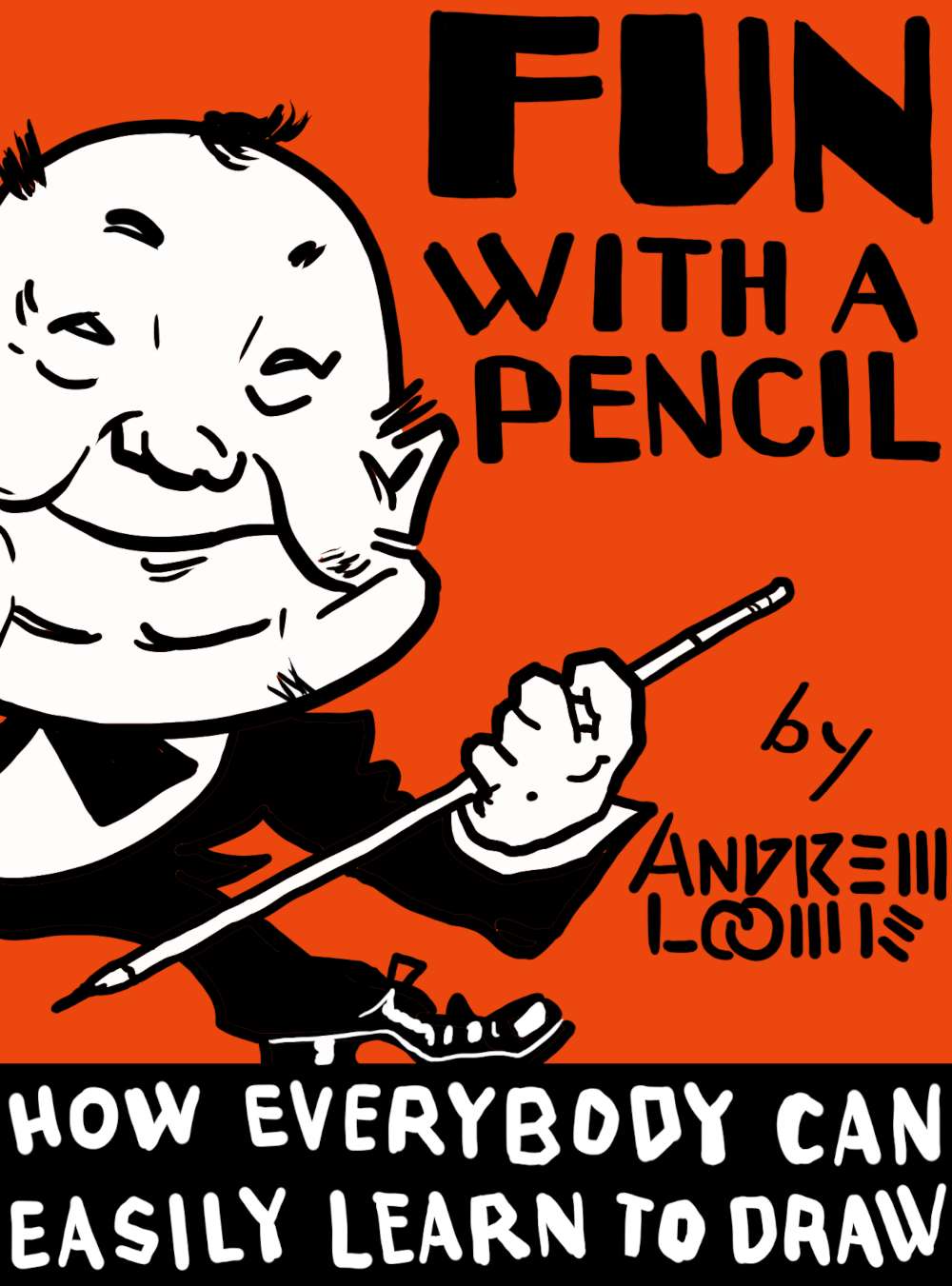 W42fQt7y6LnAv2Q0prG29eshogCwnbdG_8MnQt4DMqo
W42fQt7y6LnAv2Q0prG29eshogCwnbdG_8MnQt4DMqo
- Andrew Loomis: Fun with a Pencil, 1939


- Construction, human head and figure, casual.
- Pencil, ballpoint.
- With a circle and a few construction lines you shall draw anything!
- 51 studies, 2 months
- 2/10 poor introduction to construction of human figure and head. Although Loomis is regarded as one of the most well-known American illustrators, and his books are highly recommended for both novice and experienced illustrators, this debut book should be avoided. His cartoon faces and figures frequently leave much to be desired in terms of aesthetics and educational value, and the skill curve is extremely steep. At first it presents a simplified head model, then breaks the rules with examples right away. This is really annoying because the book instructs you to build the heads using the blueprint it just provided rather than copying them. However, since every example violates the rules, you won't be able to duplicate the designs.
The book wasn't a total waste of time: it successfully forced me to stop relying on references and start sketching one of the most difficult art subjects from memory / imagination. However, it did it in a VERY nasty way. There has to be a better way.
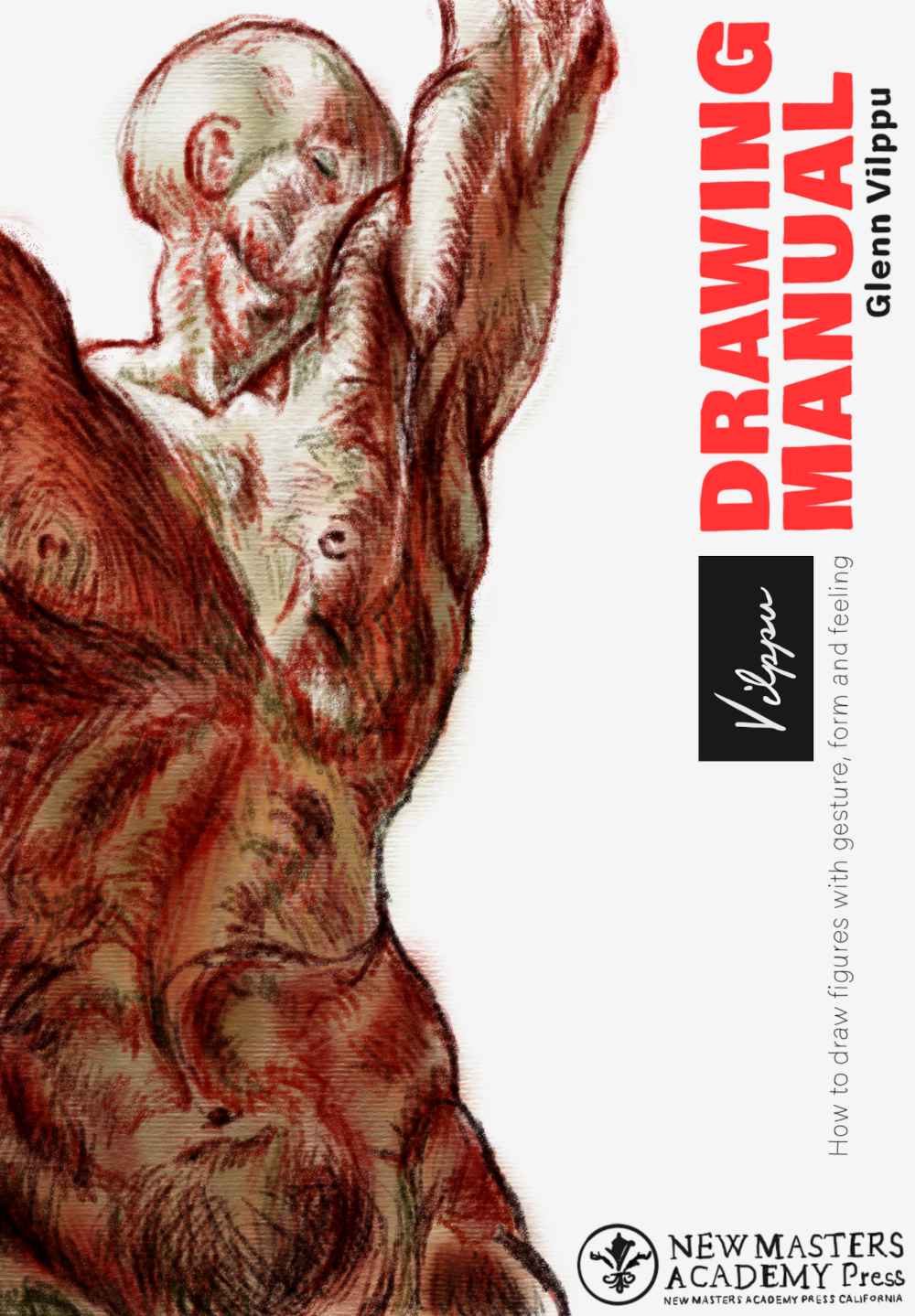 c-m6FK87cpFIcpYYe1Pzn3A988r-NDVy4ttxuBxZ9Ss
c-m6FK87cpFIcpYYe1Pzn3A988r-NDVy4ttxuBxZ9Ss
- Glenn Vilppu: Drawing Manual, 2022


- Gesture, construction, observation, human figure.
- Oil based colored pencils, ink.
- We do not copy the model, we analyze it!
- 70 studies, 3 months
- 5/10 beginner friendly introduction to figure drawing. Vilppu is a well-known art instructor who trained the majority of the illustrators and animators in the West nowadays. His lifelong fascination with classic masters like as Dürer, Leonardo or Rubens had influenced his illustrations in this book, which prioritize fluidity, form, and gesture. Basic skills like dissecting the model into fundamental 3D shapes are taught first, afterwards the gesture is introduced, and it is never abandoned — after all, gesture is the most crucial component of drawing. Feel the form! Excellent book that provides you with all the resources and a realistic mindset to start and practice figure drawing.
The book advises you to sketch from life rather than following its examples, however that is a lame excuse given that the main purpose of art books is to act as a showcase of the finest examples of flawless work. For practical purpouses of body anatomy study this book is rather lackluster. Excellent book for novices, rather poor for advanced ones.
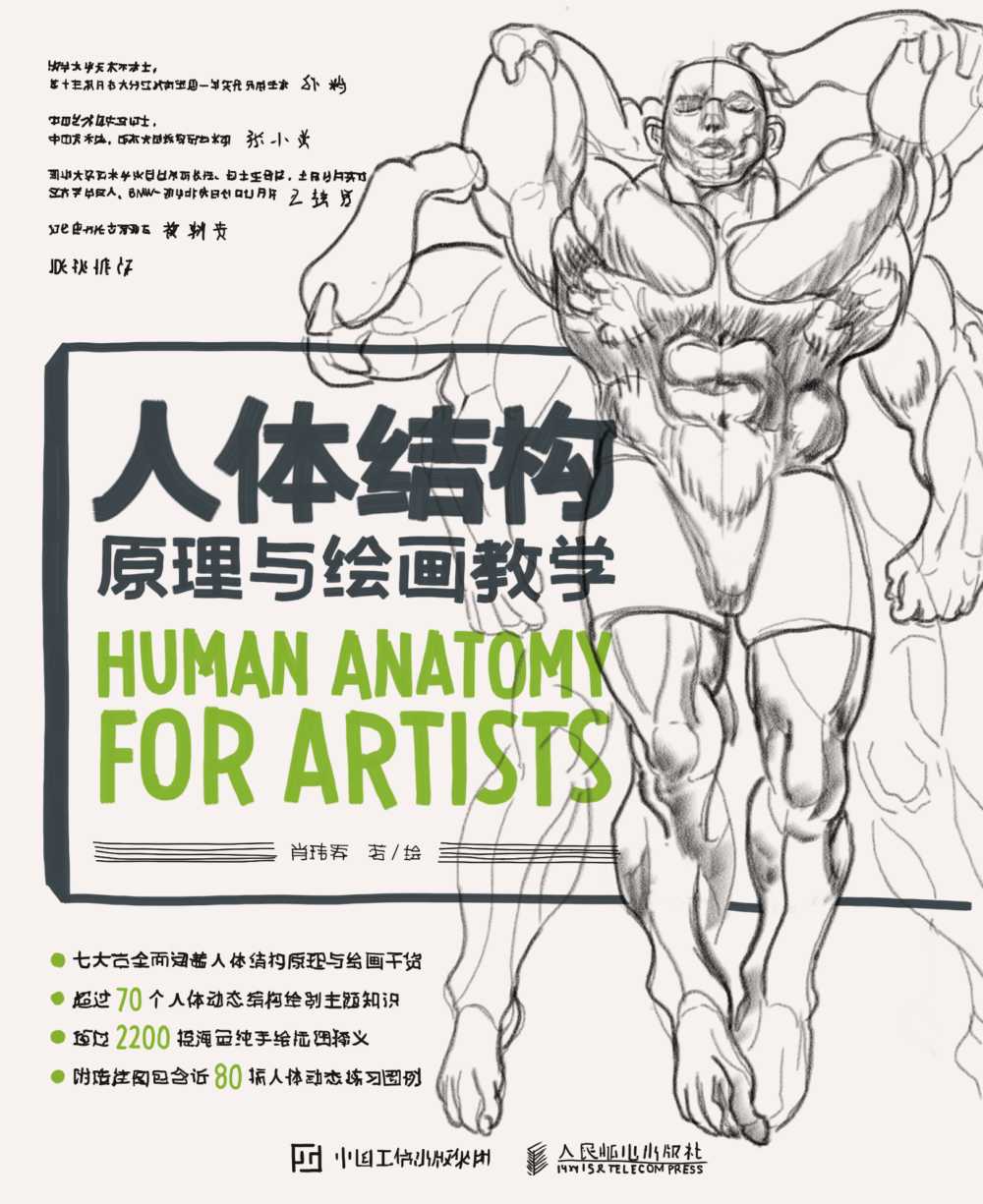 vNq5MJPMaep9ojUgJ0M5V2WH5c577poZiYsh-gGu57g
vNq5MJPMaep9ojUgJ0M5V2WH5c577poZiYsh-gGu57g

 FXjDiQp54qp_QmKp9ueRoh7K9F6TFT9QQWHvJYPCSTo
FXjDiQp54qp_QmKp9ueRoh7K9F6TFT9QQWHvJYPCSTo
 -yVFtCTWwrt4AoIO0ZX4aoTR6s-AcK81aqjx1oK_gCs
-yVFtCTWwrt4AoIO0ZX4aoTR6s-AcK81aqjx1oK_gCs
 MiHnEgHr3wQ_738ysWSwQ6piEXQYGxArg020Kb_grcw
MiHnEgHr3wQ_738ysWSwQ6piEXQYGxArg020Kb_grcw
 DA6iwr0kmKJdwbrTV0aXVEEIy5x5UopF6Zy7_camXq8
DA6iwr0kmKJdwbrTV0aXVEEIy5x5UopF6Zy7_camXq8
 JWcbAHcioTHEC6RbQpUb0jRvjewTu0cJDUbLcyKB078
JWcbAHcioTHEC6RbQpUb0jRvjewTu0cJDUbLcyKB078
 Ypba1AwlQ1tlpOQ-Q4gvlGoACeAaN_1lKzUc1VItEJk
Ypba1AwlQ1tlpOQ-Q4gvlGoACeAaN_1lKzUc1VItEJk
 p_KUYB5voWBqqAittMh_oxWcRHkafieieS_acr1I8xo
p_KUYB5voWBqqAittMh_oxWcRHkafieieS_acr1I8xo
 jv-jRtHT4_TTS7ZfmMMCzvmLDgmfA1ItPnW4SY2zwvI
jv-jRtHT4_TTS7ZfmMMCzvmLDgmfA1ItPnW4SY2zwvI
 jrgbBC9-bSkvBJdfS8hRGrCYi1ft3yH9UeY-4UIJa9c
jrgbBC9-bSkvBJdfS8hRGrCYi1ft3yH9UeY-4UIJa9c
 Bqg8gTEASofJyE5I0e2REXv8L8WE9jrw_JPGiwuxLtk
Bqg8gTEASofJyE5I0e2REXv8L8WE9jrw_JPGiwuxLtk
 -O7smuCNN-FBCkbPgJxU9JAlMSH1QcWWsjijV-mJ54k
-O7smuCNN-FBCkbPgJxU9JAlMSH1QcWWsjijV-mJ54k
 m5gp1yHn8gMnzANU8q_GGcZvmF4FB9cI_uMZ-MgvIXg
m5gp1yHn8gMnzANU8q_GGcZvmF4FB9cI_uMZ-MgvIXg
 W42fQt7y6LnAv2Q0prG29eshogCwnbdG_8MnQt4DMqo
W42fQt7y6LnAv2Q0prG29eshogCwnbdG_8MnQt4DMqo
 c-m6FK87cpFIcpYYe1Pzn3A988r-NDVy4ttxuBxZ9Ss
c-m6FK87cpFIcpYYe1Pzn3A988r-NDVy4ttxuBxZ9Ss
 vNq5MJPMaep9ojUgJ0M5V2WH5c577poZiYsh-gGu57g
vNq5MJPMaep9ojUgJ0M5V2WH5c577poZiYsh-gGu57g